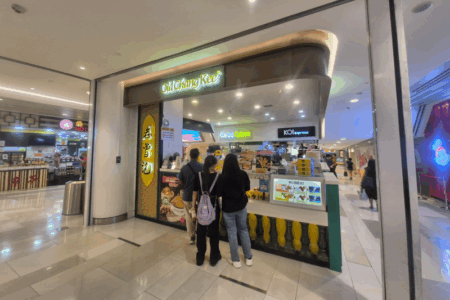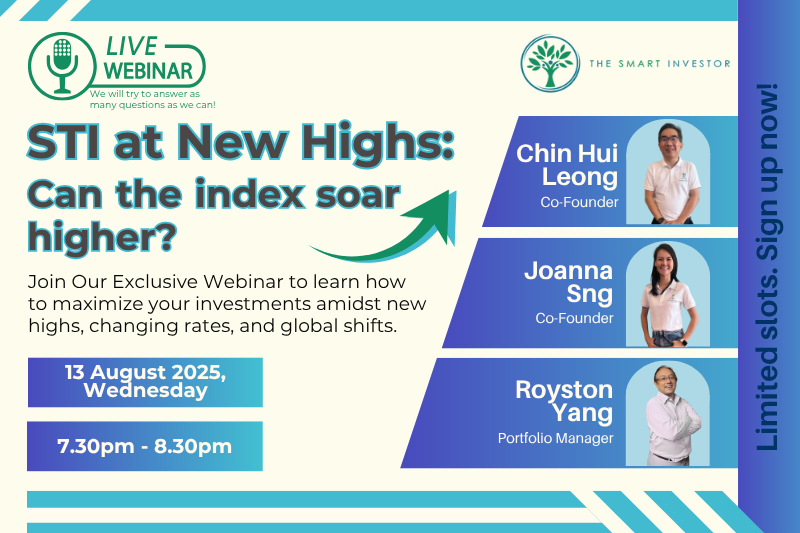As one of Singapore’s “Big Three” banks, United Overseas Bank Limited (SGX: U11), or UOB, needs no introduction to Singapore investors.
But what if you had invested S$10,000 in UOB 10 years ago? In this article, I examine what it would have been like. Spoiler alert: The answer showcases the power of compounding long-term with dividends and capital appreciation.
UOB’s Share Price 10 Years Ago
Let’s take a trip back to 2015, when UOB shares started the year trading at S$24.50 each.
An investment of S$10,000 would have gotten you 400 shares (we have to round down to the nearest 100-share lot).
Share Price Growth Over 10 Years
Assuming you bought UOB shares at that point, you would have to endure a heart-wrenching drawdown of -31.4% shortly after, when the share price hit a low of S$16.81 in early 2016.
However, if you had told yourself, “It’s fine, time in the market beats timing the market, I own one of Singapore’s premier banks, they will do well long-term,” and not sold, UOB’s share price would have appreciated 79.3% to a high of S$30.14 in early 2018.
From your buy point, you would be up 23.0%.
Alas, from that peak to the COVID-low, you had to sit through a decline of 41.7%.
Assuming you did not panic and held onto your shares, you would have enjoyed a strong rally of 95.5% from the 2016 low to S$32.86 by early 2022, and be up 34.1% from your buy point.
UOB’s share price would then decline 20.9% to a low of S$25.99 in late 2022 off inflationary fears and a global macroeconomic slowdown. You should notice by now, even great companies suffer big declines in their share prices.
From the 2022-low, UOB’s share price rebounded sharply 48.8% to a recent high of S$38.67.
Right now, the share price is S$34.93 (16 October 2025).
From the start of 2005, your capital gain on this investment is 42.6%. This works out to a nondescript compound annual growth rate (CAGR) of 3.6%.
Dividends Along the Way – Earn an Income While You Hold
Over the past decade, UOB has paid a consistent dividend every year.
In total, the bank has paid a cumulative dividend of S$13.28 per share since 2015.
This includes six occasions when UOB paid special dividends, which were initially S$0.20 per share annually in pre-COVID years, before increasing to S$0.25 per share in 2024.
Generally, UOB’s annual ordinary dividend per share has been growing consistently, save for two years (2016 and 2020).
An owner of 400 UOB shares bought at the start of 2015 would have earned S$5,312 in passive dividend income by now.
UOB’s dividend yield in 2015 was 2.9%, with a payout ratio of 36.3% excluding special dividends for the year.
Over the last twelve months (LTM), UOB’s dividend yield actually increased to 5.4%, with its payout ratio also rising to 50.6%, excluding special dividends.
Total Return (Capital Gains + Dividends)
So how does UOB fare on a total shareholder return (TSR) basis?
Combining its current share price and dividends collected, a UOB investor from 10 years ago will be sitting on a cool total gain of S$9,484.
The final value of their investment today is S$19,484, up 94.8% from a purchase price of S$24.50.
The CAGR of the investment over the last decade is 7.0%.
This is commendable compared to the Straits Times Index’s CAGR of 6.3% in the same time frame.
Why UOB Delivered These Returns
UOB was able to deliver strong returns due to its exposure to regional economic growth in South East Asia.
The bank’s net interest income (NII) of S$4.9 billion in 2015 grew at a compound annual growth rate (CAGR) of 7.3% to S$9.7 billion in the 12 months ended 30 June 2025.
UOB’s 10-year average net interest margin (NIM) is 1.8%. Its NIM in the first half of 2025 is 1.96%.
UOB’s loan book has grown steadily at a CAGR of 5.4% to S$342.9 billion. This stable growth in loans allowed the bank to grow its NII, which contributed to its strong dividend policy as highlighted above.
Management’s conservative capital management practices are seen in UOB’s CET1 (Common Equity Tier 1) ratio of 15.3% in 1H2025. This is more than twice the regulatory standard of 6.5%.
A high CET1 acts as a strong buffer for the bank against loan losses, which allows UOB to be resilient through market cycles, from COVID to rate cuts/hikes.
What This Means for Investors – Stay the Course in Long-Term Investing
UOB is a perfect example of the power of long-term compounding by investing in quality blue-chip dividend payers.
Simply collecting dividends, without reinvesting, provides a nice boost to UOB’s total return.
Being patient and letting compounding work its magic has paid large dividends – pun intended – to long-term investors in Singapore’s banks.
Conclusion – Get Smart: Adopt a Long-Term Mindset
As shown above, investing S$10,000 in UOB a decade ago would have been rewarding to long-term investors.
The lesson is straightforward: time in the market, being invested and holding strong dividend-paying shares through the highs and lows can be a simple yet reliable way to compound your wealth.
This new 10-minute read could change how you invest this year. Inside:
5 SG dividend-paying blue chips that have quietly powered through past downturns, and could reward you handsomely in the next.
Grab the free report now. It might be the most profitable thing you read today.
Disclosure: Wesley does not own shares in any of the companies mentioned.






